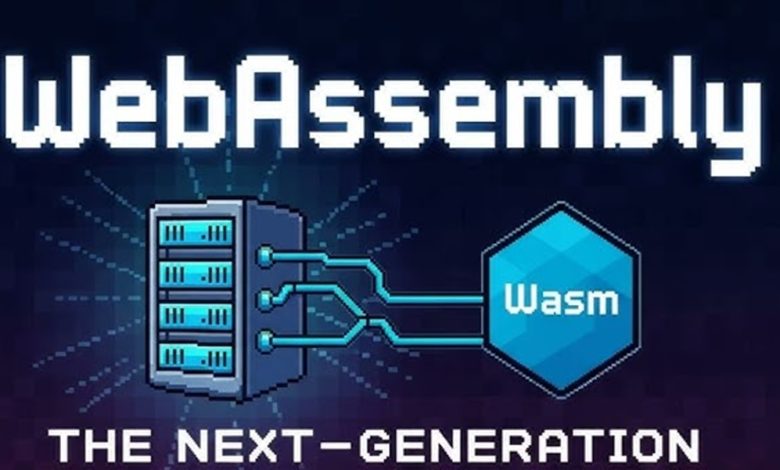The Rise of Distributed and Serverless Apps: Leveraging WebAssembly for the Next Generation

Modern applications are no longer confined to monolithic servers or single-platform deployments. Users expect fast, scalable, and seamless experiences across devices, often in real time. Two major trends are shaping this shift: distributed architectures and serverless computing. Adding to this, WebAssembly (Wasm) is enabling developers to run high-performance, near-native code in browsers and edge environments, revolutionizing how apps are built and deployed.
This article explores the rise of distributed and serverless applications, the role of WebAssembly, architectural considerations, and best practices for next-generation app development.
Understanding Distributed Applications
Distributed applications divide tasks across multiple computing nodes that communicate via network protocols. Unlike monolithic apps, distributed apps offer:
- Scalability: Services can scale independently to handle variable loads.
- Resilience: Failure in one node does not necessarily crash the entire system.
- Flexibility: Teams can develop and deploy modules independently.
Examples:
- E-commerce platforms splitting payment, catalog, and recommendation services.
- Real-time collaboration apps like Google Docs, where multiple servers handle editing, storage, and notifications.
Key Components of Distributed Apps
- Service Communication: REST APIs, gRPC, or message queues (Kafka, RabbitMQ).
- Data Storage: Distributed databases like Cassandra, DynamoDB, or CockroachDB.
- Orchestration: Tools like Kubernetes manage service deployment, scaling, and health.
The Serverless Paradigm
Serverless computing abstracts server management, allowing developers to focus on code. Key characteristics:
- Event-driven execution: Functions execute in response to triggers (HTTP requests, database changes, or messages).
- Automatic scaling: Resources scale dynamically based on demand.
- Cost efficiency: Pay only for execution time and resource usage.
Popular Platforms: AWS Lambda, Azure Functions, Google Cloud Functions, Cloudflare Workers.
Benefits for Developers:
- Faster deployment of features.
- Reduced operational overhead.
- Easy integration with distributed systems.
WebAssembly (Wasm) in Modern Apps
WebAssembly is a binary instruction format that allows code written in languages like C, C++, Rust, or Go to run in the browser or on edge nodes at near-native speed.
Advantages of WebAssembly
- Performance: Near-native execution speeds compared to JavaScript.
- Portability: Run the same code on browsers, servers, and edge devices.
- Security: Runs in a sandboxed environment, reducing attack surfaces.
- Interoperability: Works alongside JavaScript and other web technologies seamlessly.
Use Cases in Distributed and Serverless Apps
- Real-time gaming: High-performance game engines running in the browser.
- AI inference: Running machine learning models locally or at edge nodes.
- Data visualization: Complex visualizations executed directly on client devices.
Example: A scientific simulation app can run physics calculations in the browser via Wasm, reducing server load and latency.
Combining Serverless, Distributed, and Wasm
1. Edge Computing Meets Serverless
Serverless platforms increasingly support edge deployments. Functions execute close to users, reducing latency. Wasm modules can run directly on edge servers, providing both high performance and low latency.
Example Architecture:
- Client: Browser or mobile app running Wasm modules for real-time computation.
- Edge Functions: Serverless functions handling authentication, data aggregation, or lightweight processing.
- Cloud Backend: Heavy computation, storage, analytics, and global coordination.
2. Microservices + Serverless Functions
Distributed apps can implement microservices as serverless functions, each responsible for a single task. Wasm modules can be embedded for compute-intensive operations, enabling high-performance microservices without provisioning dedicated servers.
Technical Considerations
- Cold Start Latency: Serverless functions may have startup delays; using Wasm modules can mitigate performance bottlenecks.
- State Management: Stateless functions require external storage or event-driven workflows for persistence.
- Security: Edge deployments and Wasm execution must handle sandboxing, authentication, and secure communication.
- Monitoring and Observability: Distributed and serverless architectures require advanced monitoring tools like Prometheus, Grafana, or OpenTelemetry.
Case Studies
1. Cloudflare Workers
- Implementation: Edge serverless platform using Wasm for high-performance, globally distributed functions.
- Impact: Low-latency web services, global API endpoints, and high scalability without managing infrastructure.
2. Figma
- Implementation: Collaborative design tool using distributed architecture to handle real-time multi-user interactions.
- Impact: Seamless collaboration with minimal latency and robust scaling.
3. Fastly Compute@Edge
- Implementation: Combines serverless functions with Wasm for edge computing applications.
- Impact: Enables developers to run high-performance logic close to users without traditional servers.
Best Practices
- Adopt a Modular Architecture: Combine serverless functions and microservices for flexibility.
- Optimize Wasm Modules: Keep binaries small, use efficient compilation, and leverage multi-threading when possible.
- Implement Robust Observability: Monitor latency, errors, and resource usage across edge and cloud nodes.
- Design for Statelessness: Ensure serverless functions remain stateless and offload storage to distributed databases or caches.
- Plan for Hybrid Deployments: Use a mix of cloud, edge, and client-side Wasm to optimize performance and cost.
Future Trends
- WebAssembly System Interface (WASI): Expanding Wasm beyond browsers to full-fledged OS-level applications.
- Serverless AI: Deploying AI models as edge functions with Wasm for near-instant inference.
- Global Edge Networks: Serverless platforms with worldwide edge nodes providing ultra-low latency experiences.
- Cross-Platform Wasm Apps: Unified applications running seamlessly on web, mobile, and desktop using Wasm modules.
Conclusion
The convergence of distributed architectures, serverless computing, and WebAssembly is transforming how modern apps are designed and deployed. Developers can now build applications that are highly scalable, low-latency, cost-efficient, and secure, while providing rich and interactive user experiences.
Embracing these technologies allows development teams to focus on business logic and user experience, leaving infrastructure, scaling, and optimization to flexible serverless and edge platforms. The next generation of apps will be faster, smarter, and more globally responsive, setting new standards for both developers and users.

